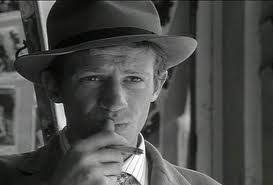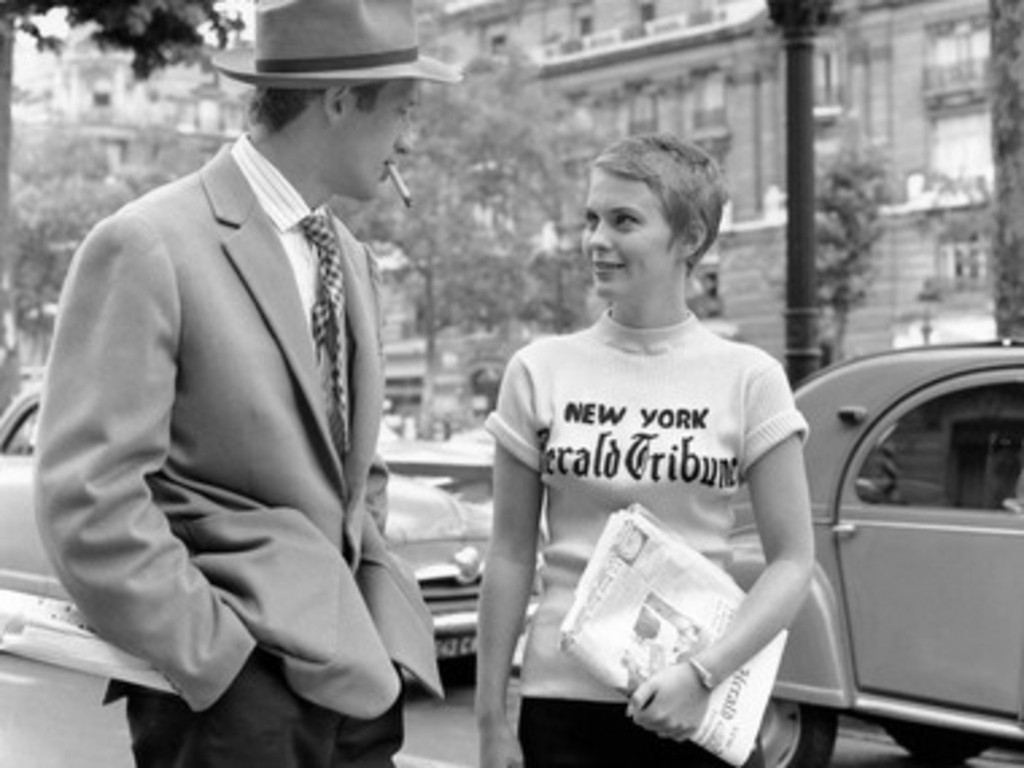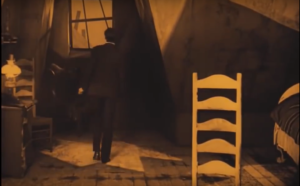Breathless – French New Wave
 Breathless is a film directed by Jean Luc – Godard in 1960. It is a film which was part of the French New Wave film movement. The film was filmed in Paris on sight. This was because breathless had a low budget, around £15,000, which is an extremely low budget for a film. Continuing with this theme of a low budget, the whole film was recorded in black and white in order to save money. However, this also contributed to the films feeling of Noir.
Breathless is a film directed by Jean Luc – Godard in 1960. It is a film which was part of the French New Wave film movement. The film was filmed in Paris on sight. This was because breathless had a low budget, around £15,000, which is an extremely low budget for a film. Continuing with this theme of a low budget, the whole film was recorded in black and white in order to save money. However, this also contributed to the films feeling of Noir.
 The idea of film Noir is a big idea in this film. From the black and white film reel, to the stereotype of a chain-smoking man in a suit and fedora. Both contribute to the Film Noir style. This film set the standards for Film Noir in the future, any other Noir Film you see will almost seem like or make references to this film. For instance, films such as Blade runner and a Touch of Evil depict dark worlds, in which we follow a dark character (though in Blade Runner is a police officer) through chase sequences, and the main character being either a detective or on the wrong side of the law. Either way, the police Is usual involved in some way. However, Blade runner is a little different because the film is in color. However, in the intro for instance, the shots of the city are very dark. This is a theme throughout the film, although they have access to color, the film tends to steer away from using color in its shits when it can. Keeping with the idea of Noir being black and white. As we as all that, in Noir films the characters tend to smoke a lot. I think this had to do with how mysterious the main character usually is, using smoke to hide their appearance.
The idea of film Noir is a big idea in this film. From the black and white film reel, to the stereotype of a chain-smoking man in a suit and fedora. Both contribute to the Film Noir style. This film set the standards for Film Noir in the future, any other Noir Film you see will almost seem like or make references to this film. For instance, films such as Blade runner and a Touch of Evil depict dark worlds, in which we follow a dark character (though in Blade Runner is a police officer) through chase sequences, and the main character being either a detective or on the wrong side of the law. Either way, the police Is usual involved in some way. However, Blade runner is a little different because the film is in color. However, in the intro for instance, the shots of the city are very dark. This is a theme throughout the film, although they have access to color, the film tends to steer away from using color in its shits when it can. Keeping with the idea of Noir being black and white. As we as all that, in Noir films the characters tend to smoke a lot. I think this had to do with how mysterious the main character usually is, using smoke to hide their appearance.


 ‘Strike’ is Sergi Eisenstein’s first full-length film, released in 1925. ‘Strike’ is a silent film about the workers at a factor
‘Strike’ is Sergi Eisenstein’s first full-length film, released in 1925. ‘Strike’ is a silent film about the workers at a factor As well as that, Eisenstein uses Montage in order to show multiple events that are occurring at the same time. For instance, when the workers are revolting against the factory, the shots we are shown keep switching between two of the workers having a fight with one of the owners, while we are also shown all the workers running out of the factory and becoming free.
As well as that, Eisenstein uses Montage in order to show multiple events that are occurring at the same time. For instance, when the workers are revolting against the factory, the shots we are shown keep switching between two of the workers having a fight with one of the owners, while we are also shown all the workers running out of the factory and becoming free. 


